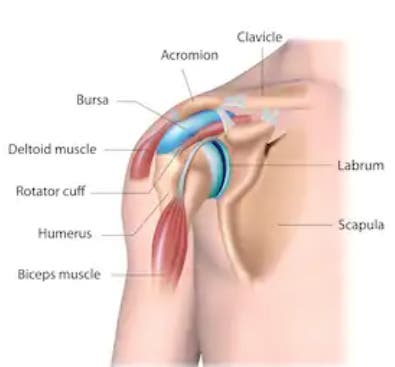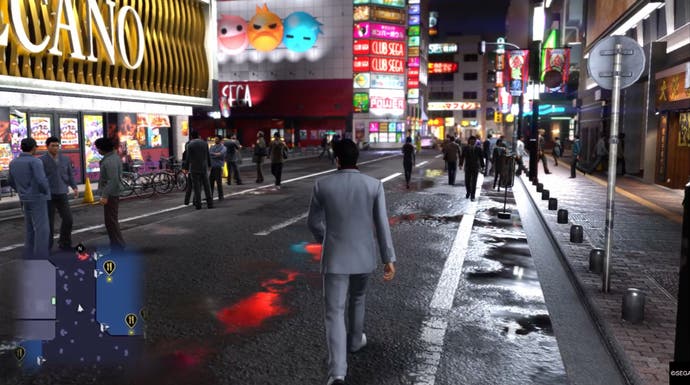Why can't video games get shoulders right?
Shrug.
When we talk about the uncanny valley, the focus is usually on the eyes or the mouth - on something that's ever so slightly awry with the face. But what about the shoulders? We've been accustomed to seeing shoulders centred on our screens ever since the up-close viewpoint of Resident Evil 4. But there's always been something about video game shoulders that's been a bit off, and I can't quite put my finger on what it is. Is it just stiff animation, or is it something else?
To better grapple with the subject, I sought advice from some people who know a thing or two about how the shoulder works in real life. As it turns out, it's a more complex joint than I had thought.
"If you're looking at it in isolation, then the shoulder is the ball-and-socket joint, what we call your glenohumeral (GH) joint," orthopaedic registrar Charlotte Somerville explains to me over the phone. "But if you're thinking about shoulder movement, there's so much more to it than that. You have your clavicle that joins up to your sternum in the middle, and unless you're doing quite restricted movements, your scapula is moving alongside the movements of your arm as it's coming off your body, or forward, or back."
The scapula, or shoulder blade, is actually the immediate focus when I call chiropractor Michael Jordan about the subject: "The scapula is where you've got a series of muscles that sit on and around it, which allow all these intricate movements that gives you more or less 360-degree movement of the shoulder. For example, if you were to hold a gun, that pose with your elbows slightly out, any movement in terms of rotation of the shoulder is going to rely heavily on the muscles that sit around the scapula."

The problem, then, seems to be that, when you look at the way shoulders move in games, much of this detail is absent. With no attempt to simulate the internal mechanics of the skeleton, what you're often seeing is just the arm swinging independently of the torso.
Or take that most familiar of actions, the shrug. We naturally shrug with our shoulders, but in games, characters will do this with their arms instead. It's as if they can't actually raise their shoulders to perform that action in the first place.
Even in the real world, it's a bit more complicated than just raising the shoulders, as Jordan explains. "What you'll find is that the shoulder is actually more coming towards your ear when you shrug," he tells me. "That movement would involve the joints at each end of your clavicle, which attaches to your sternum."
Given that orthopaedic surgeons and chiropractors treat problems with the shoulder on a routine basis - dislocations and fractures or long-term postural issues respectively - I wondered if they could assess some game characters' movements for me.
Across the board, while no one looks like they're walking around with a dislocated shoulder, it's evident that the majority of representations of video game shoulders focus on arm movement and not a whole lot else. For Somerville, this highlights a common misunderstanding of the shoulder: "Mechanically, you're talking about the GH joint but visually you're talking about the whole shoulder girdle - that includes the upper back, the front of the chest, the arm, and the back of the arm in order to get more natural-looking movement."

Looking at Yakuza 6, just the swinging of the arms lacks the natural flow in the shoulders or the linking up of the ball-and-socket and the upper back. Interestingly, though there's no animation of the scapula, there does appear to be an attempt to accentuate Kiryu's muscular build. It's something of a texture trick while he's walking, so that you see an impression of his shoulder blades on the back of his jacket. Even so, Somerville tells me that they look too small and far apart to be realistic.
If the scapula is so integral to shoulder movement, how come this isn't accurately represented in games? I spoke about this with game animator Rick Lico from Polyarc. While the studio's currently only known for VR adventure game Moss, in which you control an anthropomorphic mouse, Lico's previous credits have all been on the more human side of things, including Destiny, Halo, Jedi Academy and Condemned.
"I've never worked on a rig that's had a bone for the shoulder blade - it's always been point-weighted between the clavicle and the torso," he tells me over Skype. "In most cases, the scapula is not actually a bone inside of an animation rig."
Although the clavicle is included and usually animated, he explains that it's often not connected to the shoulder animation, which is why we end up with a simplistic 'pendulum swing' instead of something more realistic. As for why animators go down this route, it often comes down to technical and budgetary constraints, but also priorities.

"Usually game engines only let you attach maybe five joints onto a vertice on a mesh," he tells me. "And that's if you're not, say, Destiny where you have a ton of players playing at once. The more vertices you weigh to a given bone, the more it costs, so you have less characters on screen. It's like a balancing act a lot of game developers do to try and fit as many characters on screen as required."
But as game engines and hardware continue improving, shouldn't the shoulders become more of a priority in attempts to narrow the uncanny valley? Besides the functional movements, there's the matter of how expressive the shoulders can be when conveying emotions. As animation mentor Dana Boadway Masson (whose credits include the game cinematics for Halo 3 and ODST) puts it in a post on the subject: "[shoulders] even frequently betray emotions that a person might be trying not to show outwardly."
While Boadway Masson is writing about film animation, a field in which storytelling and emotions are the priority, this is increasingly relevant for games. It's a kind of detail that's so subtle and easy to overlook - until you realise it's entirely absent.
Lico agrees: "Gameplay tends to be broad animation - a character running around doing jumps, firing guns, and throwing huge punches - so back then, detailed animation just wasn't in the zeitgeist.
"But as we're starting to see, a lot of detail can really sell a performance. I think you're going to see a lot of the industry evolve in that direction."









